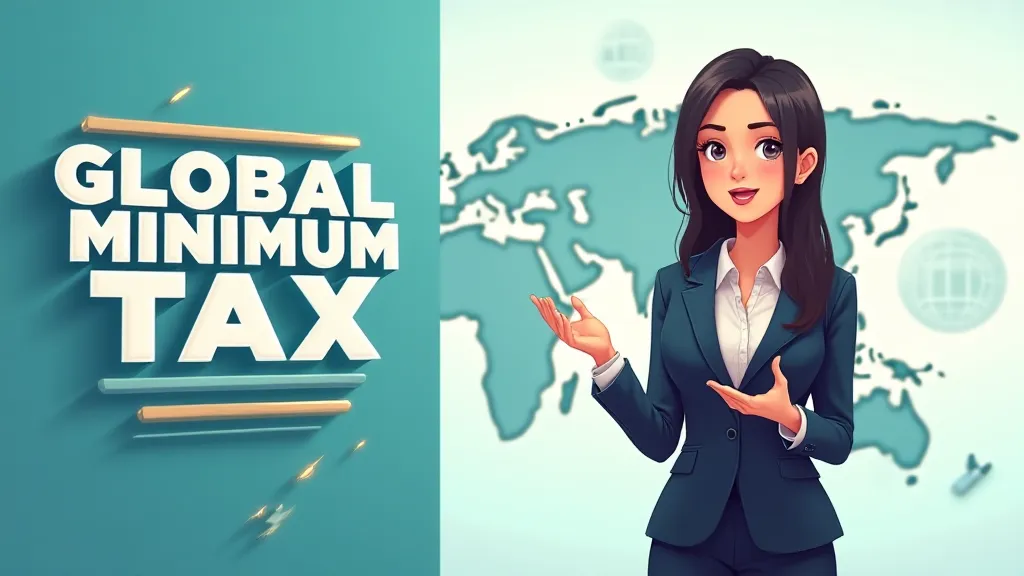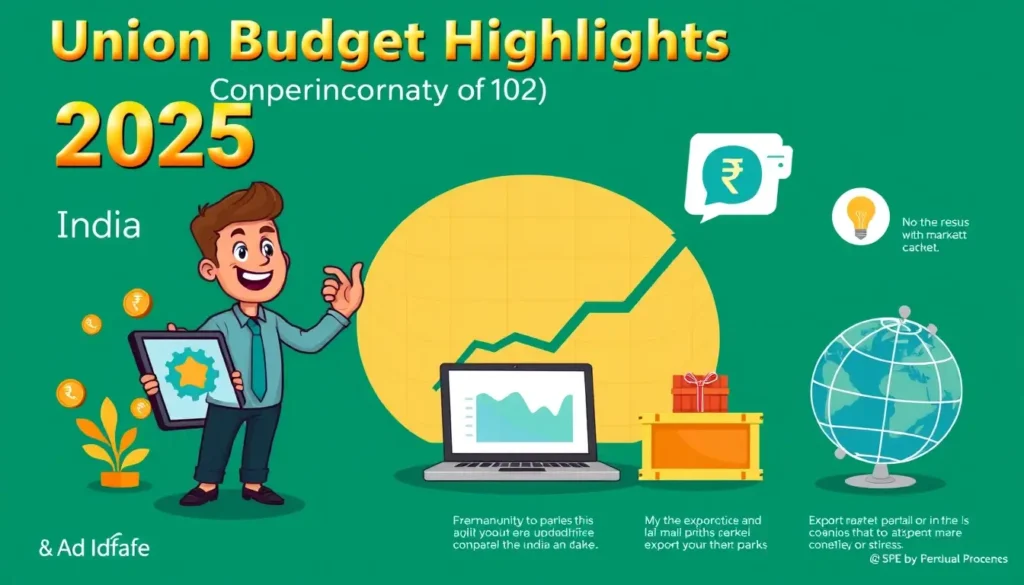
Hi friends! Ever wondered how massive corporations pay nearly zero tax while small businesses struggle? That’s exactly what the OECD Global Minimum Tax aims to fix. In this guide, we’ll walk through what multinational companies must know about this historic global tax reform. You’ll learn practical steps to adapt your tax strategy, avoid penalties, and stay competitive. Whether you’re in finance, legal, or leadership, consider this your survival toolkit for 2024’s biggest tax policy changes. Let’s demystify the jargon together!
Understanding the OECD Global Minimum Tax and Global Tax Reform
What Exactly Is the OECD Global Minimum Tax?
The OECD Global Minimum Tax represents the most significant shift in international tax rules in a century. Officially known as Pillar Two of the OECD/G20 Inclusive Framework, it establishes a 15% global minimum effective tax rate for multinational enterprises (MNEs) with annual revenues exceeding €750 million. This mechanism prevents profit shifting to low-tax jurisdictions through a “top-up tax” system. When a subsidiary’s effective tax rate falls below 15% in any jurisdiction, the parent company’s home country can levy additional taxes to reach the minimum threshold. Over 140 countries have agreed to implement this framework, covering nearly 90% of global corporate profits according to OECD ratification data.
The BEPS Evolution Leading to Reform
This global tax reform builds directly on the Base Erosion and Profit Shifting (BEPS) project initiated in 2013. BEPS 2.0 specifically addresses the digitalization of the economy and remaining profit-shifting vulnerabilities unaddressed in the first phase. The urgency intensified as corporate tax rates globally declined from an average of 28% in 2000 to under 20% by 2020, creating what the OECD called a “race to the bottom”. The agreement finally crystallized in October 2021 when 136 jurisdictions approved the framework after Ireland, Hungary, and Estonia dropped objections. The two-pillar solution aims to generate $150 billion annually in additional global tax revenue as estimated by the OECD Secretariat.
Core Objectives Driving the Agreement
The primary goals of this taxation for multinationals overhaul are threefold: First, to eliminate tax competition advantages by setting a floor rate. Second, to ensure multinationals pay taxes where economic activity occurs. Third, to create stability in international tax rules after years of unilateral digital services taxes. This framework specifically targets stateless income – profits that escape taxation anywhere. The rules contain nuanced provisions like substance carve-outs that exempt 5% of tangible assets and payroll costs from the calculation. This acknowledges that legitimate business operations deserve different treatment than shell companies.

How 15% Corporate Tax Rates Actually Work
The Calculation Mechanics Explained
Determining whether a company meets the 15% corporate tax rates threshold involves complex calculations. The GloBE Rules use a jurisdictional blending approach: all entities within a jurisdiction are combined to calculate the effective tax rate (ETR). The formula is Covered Taxes ÷ GloBE Income, with specific adjustments for permanent differences like non-deductible expenses. Crucially, deferred tax assets and liabilities must be included in the calculation. Companies must calculate ETRs separately for each jurisdiction where they operate, not globally or per entity. This jurisdictional approach prevents high-tax countries from subsidizing low-tax operations. The rules provide detailed standards for financial accounting alignment, requiring consistency with accepted international standards like IFRS or GAAP equivalents.
Substance Carve-Outs and Transition Rules
Not all income faces the 15% minimum rate immediately. The rules include a minimum tax implementation transition period with special provisions. Most significantly, a substance-based income exclusion (SBIE) removes a portion of income tied to tangible assets and payroll from the GloBE income calculation. During the 5-year transition period, this exclusion starts at 8% of carrying value for tangible assets plus 10% of payroll costs, gradually reducing to 5% for both. Additionally, a de minimis exclusion exempts jurisdictions where average revenue is under €10 million and profits under €1 million. These carve-outs acknowledge that genuine business operations deserve different treatment than profit-shifting arrangements. The OECD provides detailed computational examples for these exceptions.
Top-Up Tax Application Mechanics
When a jurisdiction’s ETR falls below 15%, the OECD tax framework triggers a top-up tax calculation. The top-up tax percentage equals the difference between 15% and the actual ETR, multiplied by the excess profit (GloBE income minus substance carve-out). This amount is then allocated among group entities using a specific formula. The Income Inclusion Rule (IIR) gives primary taxing rights to the parent company’s jurisdiction. Where the IIR doesn’t fully apply, the Undertaxed Payments Rule (UTPR) acts as a backstop, allowing other countries to collect residual top-up taxes. This layered enforcement ensures the minimum rate applies even when parent jurisdictions don’t implement the rules. Companies must track these calculations through standardized GloBE Information Returns.
MNC Tax Compliance Requirements Under New Rules
Determining Applicability and Scope
The €750 million revenue threshold for MNC tax compliance applies to consolidated group revenues based on ultimate parent entity financial statements. This threshold test uses revenues from two of the four preceding fiscal years. Importantly, the rules include anti-fragmentation provisions to prevent groups from dividing operations to avoid qualification. Once subject to the rules, MNCs must apply them to all operations globally, not just low-tax jurisdictions. Groups must map their entire corporate structure to determine covered entities, including permanent establishments and joint ventures. The rules provide specific exemptions for governmental entities, international organizations, non-profit entities, pension funds, and investment funds that are ultimate parent entities.
Country-by-Country Reporting Enhancements
The GloBE rules significantly expand existing taxation for multinationals reporting frameworks. Companies must file a standardized GloBE Information Return (GIR) containing jurisdictional ETR calculations, top-up tax computations, and entity-specific information. This return must be filed in the ultimate parent entity’s jurisdiction and shared with all relevant tax authorities. Data must align with CbCR filings but requires additional granularity, particularly regarding substance carve-out calculations. The OECD mandates XML schemas for standardized electronic filing to facilitate automatic exchange between jurisdictions. Penalties for inaccurate filings can reach 5% of the top-up tax liability per jurisdiction according to model rules. The first GIRs are due 15 months after the 2024 fiscal year-end, shortening to 12 months subsequently.

Domestic Minimum Top-Up Taxes Explained
Many countries are implementing Qualified Domestic Minimum Top-up Taxes (QDMTTs) as part of their minimum tax implementation strategy. These domestic taxes allow jurisdictions to collect top-up taxes on their own low-taxed entities before other countries apply GloBE rules. The OECD provides detailed criteria for QDMTT qualification: they must be an income tax, apply the same ETR calculation as GloBE rules, and have consistent definitions. QDMTTs give source countries first rights to top-up tax revenues, which is politically crucial for developing economies. For MNCs, this means potentially dealing with multiple domestic minimum taxes rather than a single global calculation. The UK, Canada, and South Korea have already enacted QDMTTs, with more countries following in 2024 according to OECD implementation tracking.
Navigating the Complete OECD Tax Framework
Pillar One vs. Pillar Two Differences
The comprehensive OECD tax framework consists of two distinct pillars with different objectives. Pillar One (Amount A) focuses on reallocating taxing rights for the largest multinationals, targeting approximately $200 billion of profits to market jurisdictions. It applies to companies with global revenues over €20 billion and profitability above 10%. Pillar Two is the OECD Global Minimum Tax we’re focusing on here, establishing the 15% floor. While Pillar Two has broader application, Pillar One specifically addresses digital economy challenges. The two pillars operate independently – a company could be subject to either, both, or neither. Implementation timelines also differ, with Pillar Two advancing faster than the multilateral treaty process for Pillar One.
Income Inclusion Rule Mechanics
The Income Inclusion Rule (IIR) serves as the primary enforcement tool in the OECD tax framework. Under the IIR, the ultimate parent entity’s jurisdiction imposes top-up tax on its share of low-taxed income from foreign subsidiaries. The IIR applies on a top-down basis: first at the ultimate parent level, then at intermediate parent levels if the top jurisdiction hasn’t implemented the rules. The IIR allocation uses a “top-up tax percentage” applied to “excess profit” after substance carve-outs. This mechanism ensures parent jurisdictions collect taxes that subsidiaries should have paid locally. For US-parented groups, the IIR interacts complexly with GILTI rules, requiring careful coordination. The OECD provides detailed allocation formulas for different ownership structures.
Undertaxed Profits Rule as Backstop
The Undertaxed Profits Rule (UTPR) acts as the enforcement backstop within the global tax agreement. When the IIR hasn’t fully applied top-up tax, the UTPR allows other group entities’ jurisdictions to impose additional tax. The UTPR allocation uses a formula based on employee count and tangible asset values in each jurisdiction. This creates a strong incentive for countries to implement the IIR, as jurisdictions with UTPR claims will receive smaller allocations. The UTPR becomes particularly important when parent jurisdictions don’t adopt the rules. Its application begins one year after the IIR, providing a transition window. For MNCs, this means potential tax assessments in multiple jurisdictions for the same low-taxed income.
Minimum Tax Implementation Timelines for 2024
Global Adoption Status and Deadlines
The minimum tax implementation landscape varies significantly by jurisdiction as of 2024. The European Union led adoption with its Minimum Tax Directive requiring all 27 member states to implement GloBE rules by December 31, 2023, with application from January 1, 2024. The UK implemented rules effective for accounting periods beginning on or after December 31, 2023. South Korea, Japan, and Switzerland have enacted legislation effective January 1, 2024. Over 50 countries have passed legislation as of Q1 2024, covering most major economies according to OECD implementation status tracker. The United States hasn’t enacted legislation but is applying the IIR through its existing GILTI regime while working on legislative alignment.
Transitional Safe Harbor Provisions
Recognizing MNC tax compliance challenges, the OECD created transitional safe harbor rules. The most significant is the CbCR Safe Harbor, which deems a jurisdiction’s ETR above 15% if its CbCR-reported income tax expense equals at least 15% of substance-based income exclusion. Alternatively, simplified ETR calculations can qualify. These safe harbors significantly reduce compliance burdens during initial implementation years. The transitional period runs through 2026, with possibility of extension. Additionally, a de minimis exclusion applies to jurisdictions with average revenues below €10 million and profits below €1 million. These exceptions are crucial for MNCs with operations in developing economies where tax systems may not yet align with GloBE requirements.
Impact on Existing Tax Incentives
The OECD Global Minimum Tax fundamentally alters the value proposition of tax incentives globally. Traditional incentives like IP boxes, export processing zones, and investment allowances may become ineffective if they reduce ETRs below 15%. Jurisdictions are responding by converting incentives into qualified refundable tax credits (QRTCs), which are excluded from GloBE calculations. At least 25 countries have already reformed tax incentives to align with GloBE rules according to World Bank data. MNCs with existing incentive arrangements should conduct impact assessments immediately. The OECD provides specific guidance on which incentives remain viable, generally favoring direct subsidies over tax reductions. This represents a seismic shift in how governments attract investment while complying with the global tax agreement.
Adapting Business Strategy to New International Tax Rules
Restructuring Holding Company Networks
The OECD Global Minimum Tax necessitates fundamental reviews of holding company structures. Traditional low-tax holding locations like Singapore, Ireland, and Switzerland are implementing the 15% minimum, eliminating their tax advantage. Substance requirements now determine tax outcomes more than jurisdiction selection. Companies should consider consolidating holding companies into fewer jurisdictions to reduce compliance costs. The rules create opportunities to repatriate intellectual property without immediate tax cost if home jurisdictions have rates at or above 15%. Many groups are eliminating intermediate holding companies that no longer serve economic purposes. The key principle: structure should follow business substance rather than tax optimization alone under the new international tax rules.
Transfer Pricing Alignment Strategies
Transfer pricing takes center stage in MNC tax compliance under the GloBE rules. While the minimum tax doesn’t directly change transfer pricing standards, it increases scrutiny on intercompany transactions that could affect jurisdictional ETRs. Companies should review their transfer pricing policies to ensure they align with value creation, particularly regarding risk allocation and capital deployment. Documentation must demonstrate that profits align with substantive activities to benefit from substance carve-outs. The OECD emphasizes that the GloBE rules complement rather than replace existing transfer pricing frameworks. However, the increased transparency through GIR filings means tax authorities will have unprecedented data to challenge non-compliant transfer pricing arrangements.
Supply Chain and Operational Adjustments
The substance carve-outs in the OECD tax framework create strategic opportunities. Since payroll and tangible assets reduce exposure to top-up taxes, companies may reconsider outsourcing decisions. Manufacturing facilities with significant machinery investments generate substantial substance carve-outs. Similarly, high-value R&D centers with skilled personnel create payroll-based exclusions. This reshapes traditional tax-efficient supply chain models that previously prioritized low-cost jurisdictions without considering tax substance benefits. Companies should model different operational scenarios using GloBE computation templates to optimize their effective tax rate. The rules may accelerate near-shoring trends as companies seek both supply chain resilience and tax efficiency under the new international tax rules.
FAQs: Tax Policy Changes Questions
A: Not entirely! While the GloBE rules currently target large MNCs, many countries are implementing domestic minimum taxes that apply to smaller companies. Countries like Germany have proposed thresholds as low as €15M. Plus, the €750M threshold applies to consolidated group revenue – you might be part of a larger group. Monitor developments even if currently exempt.
A: Singapore has amended its tax incentive programs to comply with the global tax agreement. The Economic Development Board now offers Investment Allowances that qualify as refundable credits excluded from GloBE calculations. Existing incentives may continue under grandfathering rules but review them immediately. The key is whether incentives reduce your effective rate below 15% in Singapore.
A: The OECD tax framework includes clear allocation rules. The Income Inclusion Rule (IIR) gives primary taxing rights to the parent jurisdiction. Only if they don’t claim will the Undertaxed Profits Rule (UTPR) apply through subsidiary jurisdictions. Disputes should be resolved through mutual agreement procedures in tax treaties. The OECD is developing a multilateral dispute resolution mechanism specifically for GloBE issues.
A: Focus on three areas: 1) Upgrade systems to handle jurisdictional ETR calculations 2) Train staff on GloBE Information Return requirements 3) Develop internal controls for data validation. Consider specialized training programs like the OECD’s MNC tax compliance certification. Many firms are creating dedicated GloBE task forces combining tax, finance, and IT expertise.
A: Not entirely – competition shifts from rates to substance. Jurisdictions now compete on infrastructure, skilled workforce, and business environment rather than corporate tax rates alone. The OECD framework still allows incentives that qualify as refundable credits or that support genuine economic development without reducing ETRs below 15%. The nature of competition is changing, not disappearing.
The bottom line? The OECD Global Minimum Tax fundamentally reshapes international business taxation. By establishing a 15% floor, it eliminates the race-to-the-bottom in corporate tax rates while creating complex MNC tax compliance obligations. Successful implementation requires understanding the nuanced OECD tax framework, particularly the interaction between Pillar One and Pillar Two. With over 50 countries already implementing rules in 2024, multinationals must act now to assess impacts, restructure operations, and upgrade compliance systems. The companies that proactively adapt will turn this regulatory challenge into competitive advantage.




